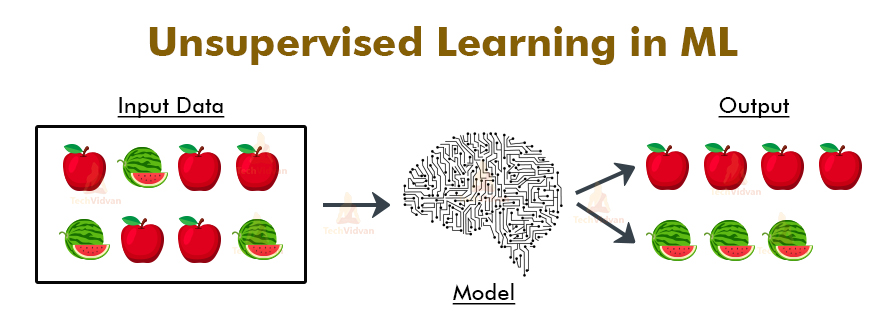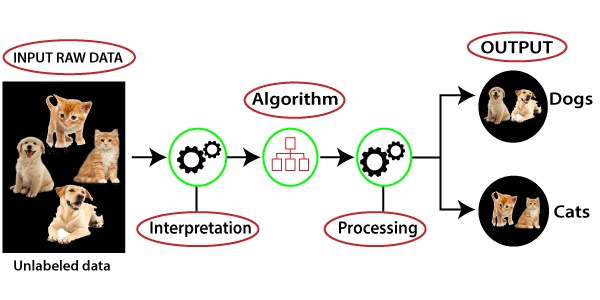Unsupervised Learning
In this type of learning, the neural network is only provided with inputs. It doesn’t receive any information regarding the output. The system by itself evaluates and finds out how different elements are related to it.
In unsupervised machine learning, the machine is trained using the unlabeled dataset, and the machine predicts the output without any supervision.
The large amount of unlabelled data is given to the machine and then it finds out some rules understand the properties of the data and try to make group, cluster, and/or organize the data in a way such that it can make some sense of the newly organized data.

or

Unsupervised machine learning can be classified in such types of problems, i.e. Clustering Read More
Advantages Unsupervised Machine Learning
- These algorithms can be used for complicated tasks.
- Unsupervised algorithms are preferable for various tasks as getting the unlabeled dataset is easier as compared to the labelled dataset.
Disadvantages Unsupervised Machine Learning
- The output of an unsupervised algorithm can be less accurate as the dataset is not labelled, and algorithms are not trained with the exact output in prior.
- Working with Unsupervised learning is more difficult as it works with the unlabelled dataset that does not map with the output.
Applications of Unsupervised Machine Learning
- Recommendation System: Recommendation systems widely use unsupervised learning techniques for building recommendation applications for different web applications and e-commerce websites. It uses the watch history from user's account that have watched similar videos as you and then enjoyed other videos that you have yet to see, a recommender system can see this relationship in the data and prompt you with such a suggestion.